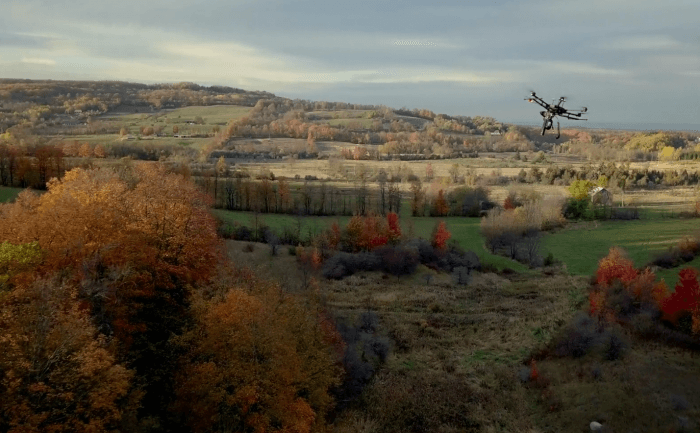Let’s plant one trillion trees by 2030.
That simple, powerful message came out of the World Economic Forum in January, as billionaires and high-ranking politicians gathered to discuss ways to keep our increasingly unstable climate from becoming unlivable.
Think COVID-19 is bad? In many ways, the current pandemic is a taste of what’s to come if we don’t dramatically reduce atmospheric CO2 emissions over the next 30 years. COVID-19 may have temporarily pushed talk of climate action to the margins, but the risks of a warming world remain.
Which brings us back to trees. Trees are humanity’s greatest allies in the fight against climate change, so when planting a trillion of them becomes a call to action for government leaders and multibillionaires, we can only hope they’ll follow through – even in a world currently seized by crisis. That includes Canadian Prime Minister Justin Trudeau’s own pledge to plant two billion trees over the next decade.
The reality is that our forests and woodlands are already under extreme stress, whether as a result of deforestation or wildfires and disease made worse by climate change. One need only look to the recent devastation in Australia, and earlier wildfires in Alberta and California, to see we have a big problem.
In the journal Science last summer, researchers estimated that there’s room on this planet – if we exclude existing urban and agricultural areas – to restore nearly a billion hectares of tree canopy. Doing so, they calculated, could store more than 200 gigatonnes of carbon, or about a quarter of the carbon currently in our atmosphere in the form of heat-trapping gases like CO2 and methane.
Put another way, it would be like removing two-thirds of the CO2 humans have dumped into the atmosphere since the Industrial Revolution. “This highlights global tree restoration as one of the most effective carbon drawdown solutions to date,” the researchers wrote.
Effective, yes, but let’s not underestimate the challenge.
Tree planting isn’t as simple as people might think. Tree planters, often summer students, experience a 25% injury rate, among the highest of almost any industry. Increasingly, these students are exposed to ticks and mosquitos that carry diseases like Lyme and West Nile virus.
Tree planting companies also require a lot of labour, as well as the infrastructure required to support it. The camps set up to support workers need kitchen trailers, showers, sleeping tents, portable toilets, drinking water, fuel, first aid rooms and other amenities – even satellite internet – and that comes at a significant cost.
There’s also a big shortage of labour most years because of the difficult nature of the job. Hauling around bags loaded with seedlings and constantly squatting in the sun while digging with a shovel is exhausting work, made worse by the swarms of blackflies and mosquitoes that make DEET your best friend.
It’s for this reason that folks like Bryce Jones, co-founder and CEO of Toronto-based Flash Forest, are working hard to develop new approaches to tree planting. Jones says all current reforestation efforts fall radically short of the true need. “If the tree-planting targets announced by federal governments in Canada, the U.S., New Zealand and Australia are going to be met, innovation will be necessary.”
Flash Forest, for example, is betting that drones will be an essential part of the solution. The company uses advanced 3D mapping technology and an enhanced fleet of aerial drones to plant trees 10 times faster than conventional approaches and at one-fifth the cost.
Each of its drones is operated by a pilot from the ground and equipped with a pneumatic firing device that shoots seed pods into the soil. The pods are made up of germinated seeds surrounded by a biodegradable, moisture-retaining casing that contains everything the seeds need to flourish, including beneficial acids, nutrients and fungi that promote healthy growth.
And each drone can carry a mix of pods, assuring that multiple types of native trees are planted, rather than monocultures that threaten biodiversity.
But it’s the numbers that are most compelling. With conventional tree planting, one person working 10-hour days could theoretically plant seven million trees over the course of a decade. To hit a trillion trees would require 143,000 people working non-stop – people who need to be put up in camps, fed and paid.
Alternatively, the same goal could be reached using just 2,800 aerial drones, each operated by a single pilot driving around in a pickup truck. How’s that for productivity in the age of self-isolation?
This example highlights the crucial role that automation, robotics, artificial intelligence and other advanced technologies will need to play to achieve the kind of greenhouse gas reductions needed to keep our climate livable.
Ambitious targets are welcome, but they’ll be meaningless unless we can properly harness the power of machines to make up for time that humanity has wasted.
Tyler Hamilton works with cleantech companies across Canada as an advisor with the non-profit MaRS Discovery District in Toronto. He is also on the board of the Ontario Clean Technology Industry Association.







